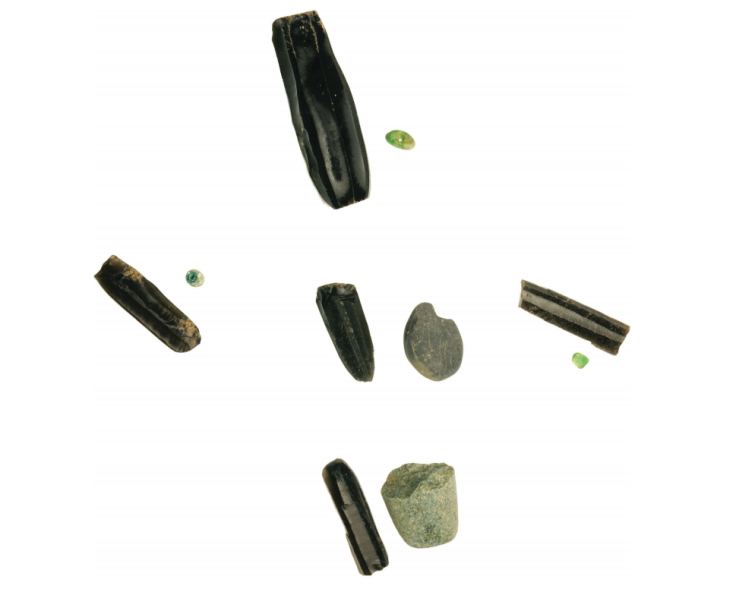Mayan child sacrifices were buried with 'supernatural' jet black stones
All of the children interred were less than 4 years old.
Archaeologists have discovered 42 obsidian ritual stones from an ancient Mayan city in Guatemala, some of which were found in the graves of child sacrifices.
The precious rocks were thought to hold special spiritual or supernatural significance for the Preclassical Mayan people. The obsidian stones were discovered in Ceibal, Guatemala, with details reported in a study in the Journal of Field Archaeology.
In one burial at the site, obsidian stones were found in a grave for two sacrificed children, between two and four years of age. The children were buried face to face, with a long obsidian blade and an unshaped piece of obsidian alongside them.
In another burial of five child sacrifices, each less than one year old, four of the five children were placed at the points of the compass. The fifth was buried in the south-west corner, with no obsidian artefact. Another piece of obsidian was buried at the central point between the children's bodies.
As well as being buried with child sacrifices, the obsidian artefacts were found buried in cross-shaped holes in the ground, or caches, along the east-west axis of the public plaza of Ceibal. Ritual burying of obsidian stones has not been documented in the Mayan lowlands before.
"In the Mesoamerican tradition obsidian has a divine origin, imbuing the material with supernatural power," the authors, led by Kazuo Aoyama of Ibaraki University in Japan, write in the study. "Because of its symbolic value, obsidian was used in a multitude of Mesoamerican religious rituals."
Trade routes with the highlands were not well established during this period, making it particularly precious. The choice to bury it in symbolic holes, or caches, in the ground represented a significant sacrifice by the Ceibal inhabitants.
"Obsidian was a rare commodity in the Maya lowlands during the Middle Preclassic period and would have been valued for its ability to produce an exceptionally sharp incision tool in addition to its worth as an imported exotic from the volcanic highlands," the authors write.
It's thought that the stones were buried by a select few who had the knowledge of how to perform the ritual. These people are thought to have been part of an emerging elite, highly respected among the community.
The site was first thoroughly investigated in the 1960s by researchers from Harvard University. Archaeologists from the Ceibal-Petexbatun Archaeological Project have now turned to it again with modern technologies, carrying out a dig from 2005 to 2017.

© Copyright IBTimes 2025. All rights reserved.






















